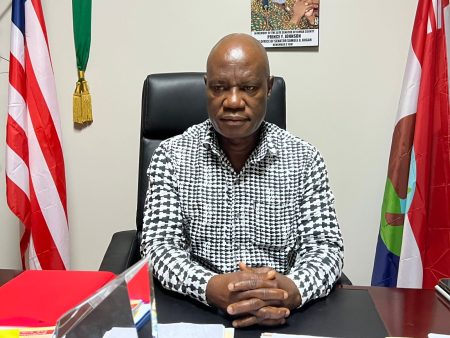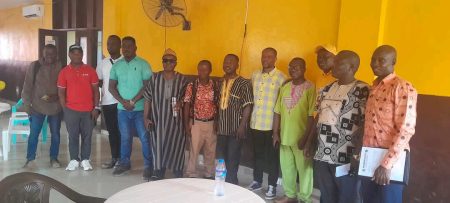A Chief’s Vision for Ostir: Transforming a Rural Community into an Agricultural and Economic Hub
Nana Munumkum Gyabi, Chief of Ostir, a community nestled near Anomabo in Ghana’s Central Region, has embarked on an ambitious mission to transform his community into a thriving agricultural and economic hub. Recognizing the vast potential of Ostir’s fertile lands, ideally suited for cultivating a variety of crops, Nana Gyabi has proactively demarcated over 5,000 acres of land for local and foreign investment. This bold initiative aims to attract significant agricultural industrialization to the area, creating much-needed employment opportunities and stimulating economic growth. As a testament to his commitment, the Chief has already allocated substantial portions of land, over 500 acres each, for the establishment of a pineapple processing factory and a cassava processing factory, laying the groundwork for agricultural value addition and enhanced market access for local farmers.
Inviting investors from across the globe to capitalize on Ostir’s agricultural potential, Nana Gyabi envisions a future where the community becomes a beacon of economic prosperity in the Central Region. He extends a heartfelt call to the diaspora, urging natives of Ostir residing abroad and in other parts of Ghana to return and contribute to their community’s development. Recognizing that progress is a collaborative effort, Nana Gyabi has opened his doors to all who are willing to invest in Ostir’s future, pledging his support and assistance in accelerating the area’s development. This inclusive approach underlines the Chief’s belief in the power of collective action and shared responsibility.
While Ostir benefits from access to reliable utilities, crucial for industrial development, Nana Gyabi acknowledges the pressing need to address infrastructural challenges. He appeals for urgent attention to the dire state of the road network, which hinders access and transportation, impeding economic activity. Additionally, the Chief highlights the importance of completing ongoing projects, including essential sanitary facilities and a Community-based Health Planning and Services (CHPS) compound. The CHPS compound is vital for improving healthcare accessibility within the community, bringing essential services closer to residents and addressing critical health needs, particularly for women and children.
Beyond infrastructural development, Nana Gyabi expresses grave concern over the persistent lack of job opportunities, which has had devastating social consequences. Unemployment has fueled a rise in teenage pregnancies, further exacerbating the socio-economic challenges facing Ostir. The Chief attributes this alarming trend to the desperation and vulnerability of unemployed youth, who are easily lured into risky behaviors due to poverty and lack of prospects. He emphasizes the urgency of intervention, calling on NGOs and government agencies to provide vocational and skills training programs that will empower the community’s youth, particularly young girls, and equip them with the tools necessary for sustainable livelihoods.
Nana Gyabi’s impassioned plea for intervention underscores the critical link between economic opportunity and social well-being. He advocates for a holistic approach to development, addressing both infrastructure deficits and the root causes of social issues. By providing youth with the skills and opportunities they need to succeed, the Chief hopes to break the cycle of poverty and create a brighter future for Ostir’s young generation.
Echoing the Chief’s call for collective action, Abuapayin Kwao Abbey emphasizes the importance of unity among residents. He reminds the community that true development is a shared responsibility, requiring active participation and contribution from all members. Abbey draws inspiration from the success stories of other communities that have thrived through collective effort, pooling resources, ideas, and labor. He stresses that government support alone is insufficient to achieve the desired transformation. Only through a unified approach, where each individual plays their part, can Ostir realize its full potential and build a better future for all. This emphasis on community ownership and participation reinforces the message that progress is a collaborative endeavor, requiring dedication and shared commitment from all stakeholders.














